Why is the Khumbu Icefall so Dangerous?
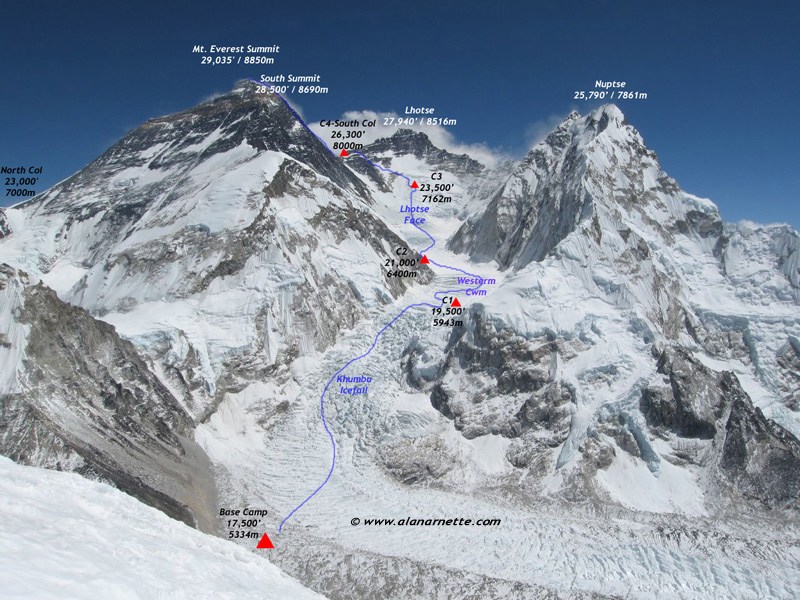
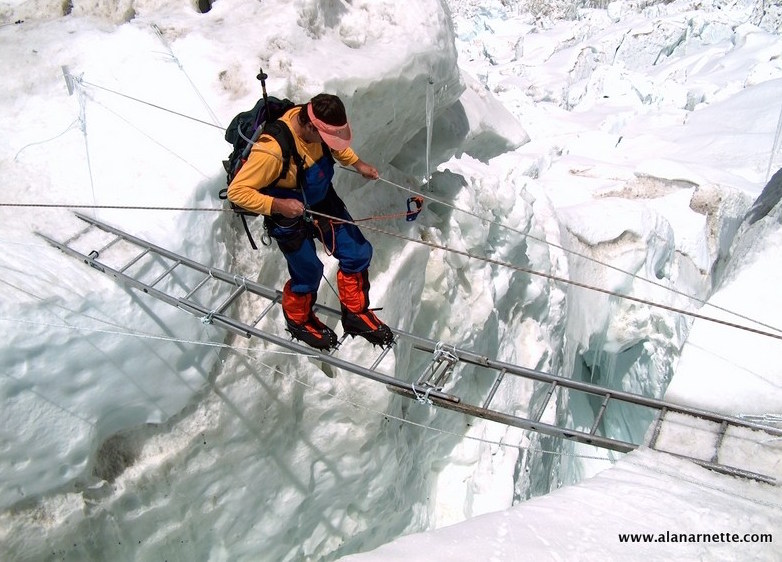
Of all the sections on Everest, the Khumbu Icefall receives the most headlines for the danger. Why is it so dangerous? Does it deserve this reputation? What can climbers do about? Let’s take a look.
A River of Ice that is Melting
Everything starts with the Khumbu Glacier, a 10 mile/17km river of ice that begins high on the Lhotse Face around 25,000’/7,600m. The Khumbu Icefall is the section between Everest Base Camp 17,300’/5270m and just below where Camp 1 is usually located, 19,500’/5943m.
Once it leaves Lhotse, the glacier defines the Western Cwm for about 2 miles before dropping rapidly to create the Khumbu Icefall for 2.5 miles. Around Everest Base Camp (EBC), the glacier makes a sharp southernly bend and continues another 6 miles/9.6km to 16,000’/4,900m. The Icefall varies in width from over half a mile/800m to a third of a mile/500m.
As with all glaciers, the Khumbu moves, as much as 3’/1m a day in the center while barely moving at the edges due to friction against rock walls. The top of the glacier moves faster than the bottom due to friction against the earth. It is this dynamic of fast and slow moving sections plus the precipitous drop that create the deep crevasses, some over 150’/45m deep and towering ice seracs over 30’/9m high.
Melting
According to Kathmandu-based mountain research institute, ICIMOD, the Khumbu Glacier is melting but not as fast as many other glaciers due to it’s altitude. It is the highest glacier on earth. It is estimated to be retreating about 65’/20m per year and has shrunk about 3,100’/940m between the 1960s and 2001.1
The glacier has thinned by 40-50’/12-15m over most of the length. Everest Base Camp is lower today due to the ice melting. In 1953 when Hillary and Tenzing summited, EBC was about 17,454’/5320m; today it is 17,322’/5280m.
Between 1962 and 2002 the Icefall thinned by an average of 56’/17m, about a rate of 1.3’/39cm per year.
Long-time Everest guide Russell Brice commented in my recent interview with him that this melting may result in a safer Icefall for climbers. But he added the Western Cwm may one day become the major obstacle of the South Col route:
But on Everest looking at photos from above, it seems that the Icefall between BC and C1 is actually getting easier and arguably safer. It also seems that several of the hanging glaciers above the Icefall are now leaning back and seem to be less active than what we experienced in 2012, again this can be explained by the warm temperatures at this altitude. However it seems to me that the crevasses between C1 and C2 are getting deeper and are now longer which results in climbers having to walk longer distances as they zig zag through these crevasses, and of course this has also resulted in some longer ladder crossings over very deep crevasses. I will not be surprised to see that we will need more ladders between C1 and C2 than before. Maybe even at the bottom of the Lhotse Face as well.
The First Icefall Climbs
George Mallory while seeking a route to climb to the summit of Everest is said to have sighted the Icefall in the early 1920s and said it was “terribly steep and broken … all in all the approach to the mountain from Tibet is easier“5 thus shifted his efforts to Tibet.
It wasn’t until 1950 when Charlie Houston and Bill Tilman led a British reconnoissance team to scout a possible route from Nepal that the Khumbu Icefall was considered feasible.
In 1951, another British team lead by Eric Shipton climbed thru the Icefall but were stopped just short of the top due to a wide crevasse. To cross the crevasses, the early expeditions used long tree trunks brought up from tree line after they ran out of ladders.
A Swiss team in 1952 overcame that obstacle by climbing into the crevasse and crossing a dangerous snow bridge. They reached 8500 meters using today’s Southeast Ridge route but failed to summit. Of course John Hunt’s 1953 British expedition that made the first summit using that same route.
The Hazards
There are multiple hazards within the Icefall that have taken lives. I used the Himalayan Database to analyze the non-illness deaths between 17,500’/5400m and 19,500’/5940m and that were in the Icefall proper. There were 44 total deaths in the Icefall or 25% of the 176 total deaths on the Nepal side from 1953 to 2016.
The 44 deaths broke down as:
Falling into a crevasse: 6 deaths or 14%
Section of Icefall collapsed: 9 deaths or 21%
Avalanche onto the Icefall: 29 deaths or 66%
While I cite specific deaths to help others, I extend my condolences to all family, friends and teammates of these tragic events.
Crevasse: 6 or 14%
Falling into a crevasse is quite common on mountains from Mont Blanc to Rainer to Everest. I fell in one above Camp 1 in 2002! On Everest the standard protocol is to be clipped into the fixed rope at all times while moving up or down the Icefall so that if you step on a soft snow bridge and fall into a crevasse or slip off a ladder, the rope will catch you. Sadly, many falls into crevasses were the result of not being clipped in.
In 2005, a westerner fell into a crevasse while crossing a soft snow bridge. Adventure Consultant team members who witnessed the fall all agreed: “It was clear that this climber was not clipped into the fixed ropes at the time of his fall; thus, a slip which should have been quickly arrested resulted in a fatal fall over a 10m drop.” 3
In 2012, a Sherpa fell from a ladder while not clipped into the fixed ropes and fell 150’/46m into a crevasse. 4
Icefall Collapse: 9 or 21%
The next hazard is being hit by an ice structure collapsing within the Icefall itself. There are many towering seracs (ice towers) that can fall over as the Icefall shifts or an entire section can simply collapse under a climber – remember it can move a meter each day and can shift suddenly with no warning. Amazingly, this event is not very common but can easily be the cause of death.
A tragic example is from 1972 when an Australian climber supporting Chris Bonnington’s British Everest SW Face Expedition was ferrying loads. He entered the Icefall, but was not seen again. A search team found a big area of the Icefall that had collapsed and assumed he was in that area when it happened. In 2008, his body was found at the foot of the Icefall. 2
Avalanche: 29 or 66%
Ice falling off the West Shoulder of Everest has resulted in massive casualties and is widely considered the most pressing danger in modern times. This is the serac, Russell Brice mentioned earlier.
There have two major events. In 1970, six Sherpas were killed while supporting a Japanese expedition and in 2014, one of the worse days in Everest history, 16 Sherpas died on 18 April when a hanging serac released as the Sherpas were waiting for a ladder to be replaced over a crevasse as they were ferrying loads to the higher camps.
The Icefall Route
The route thru the Icefall to Camp 2 is put in and maintained by a small team of Sherpas aptly called the Icefall Doctors. After the fatalities in 2014, Everest veterans huddled on changing the route thru the Icefall.
In the past decade it had shifted more towards the West Shoulder because it was faster for the Icefall Doctors to create the route. But the danger was obvious with the serac looming overhead. Looking at old maps and pictures, long time veterans Pete Athens and David Breashears suggested the route should return towards Nuptse as it was in the 1950s..
In 2015, the Doctors did just that making it shorter and safer. The route was not fully tested as the earthquake ended that season early but in 2016 they used the same path with good results, albeit with some section being steep and difficult.
Safety in the Icefall
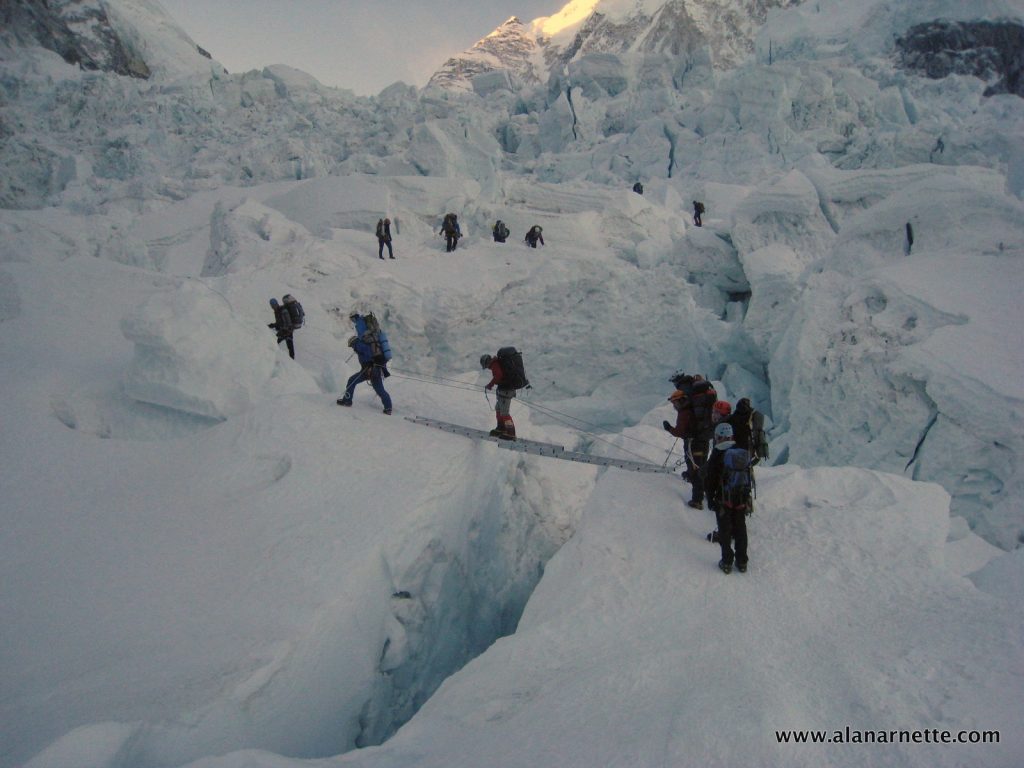
With all of this history, how do you protect yourself while climbing in the Khumbu Icefall?
For foreigners it may take over 6 hours to climb to Camp 1 on the first rotation. Once they are acclimatized, that time can be cut in half but most people still take four to five hours. This means leaving base camp no later than 6:00 am. However, most teams are on the ice by 4:00 am.
Sherpas will leave as early as 1:00 or 2:00 because they make a round trip. Impressively, they take the same time for a round trip as a foreigner does one way!
Skills Review
Most teams will take a few days to review basic skills before entering the Icefall. Sherpas will set up a short course with a couple of ladders and a fixed line running over a large block of ice. While it may seem odd to others for anyone already at Everest Base Camp to practice clipping on and off a fixed rope, use a jumar or front point on steep ice with crampons, this review sharpens everyone’s skills and is a good use of time.
Safety Habits
These are the most common precautions climbers use to protect themselves:
Never be in the Icefall when the sun is touching the ice thus heating it up and causing movement Always be clipped into the fixed rope, including on ladders Never stop for more than a few minutes at any location in the Icefall Move as fast is you safely can Let faster climbers go by
But even these steps will not prevent something unexpected from occurring. The 2014 serac realize occurred well before the sun hit the Icefall. It was around 6:45 am and the sun usually touches the ice around 10:00 am. Also ice screws that attach the fixed ropes to the ice will melt out removing the safety net provide by the ropes. So the best strategy is to move fast, confident and have extensive experience climbing in crampons on steep snow and ice – the more experience, the safer you will be.
Avoid it all together?
There is a small flock of guides that use any death on the Nepal side to promote their guiding business from Tibet. Some even going as far as calling South side operators “immoral” to put their clients and staff’s lives at risk. With this perspective, is the best way to deal with the Icefall is to avoid it altogether and climb from China?
According to the Himalayan Database, 282 people (168 westerners and 114 Sherpas) have died on Everest from 1924 to June 2016. The Nepalese side has seen 4,863 summits with 176 deaths through June 2016 or 3.7%. The Tibet side has seen 2,783 summits with 106 deaths through June 2016. or 3.8%. (see more stats here) So looking strictly at the facts, your chances are about the same on either side.
There are advantages to climbing from the north, mainly that is has fewer climbers. But there are also huge risk dealing with the politics of China, the harsh cold winds on the summit push and, now I predict, similar crowds and delays as have been on the south will now occur on the north due to the oversize marketing.
But if you want 100% assurance to minimize the Icefall risks, avoid it. But understand that there are risks climbing any mountain and that is part of the deal. To compare the sides in detail, I wrote this posta few years ago but it’s basically still valid. Also hop over to Jamie McGuinness’ Project Himalaya site for a nice article about the North with some amazing pictures.
Narrative: First Steps into the Khumbu Icefall
Finally, what is really like to climb thru the Icefall. I wrote the following narrative a few years ago but based on my experience last year, 2016, it is very valid today.
Anxiety
You set your alarm for 3:30 am knowing it was unnecessary as you have been awake for the last two hours. Over dinner the first climb into the Icefall was announced for today. Immediately, your anxiety level ratcheted up a notch.
The Khumbu Icefall. You have seen so many pictures, a few videos and recently studied it from Kala Patar, Camp 1 on Pumori and your base camp tent, but now it was time for the real thing.
Switching on your headlamp, you pull on your real climbing clothes. This is just a trip half way, but it still requires warm layers, gloves, boots, crampons, harness, jumar, cows tail, ice axe – the works. The 3-person tent that seemed so big when you arrived now seems like a closet as you swing your legs off the mattress to pull on your pants. Your arms hit the sides as your top goes on.
Scooting to the door, you pull your boots into the tent, cursing at not having the foresight to keep them inside so they wouldn’t freeze. Now you would pay the price with ten minutes of close combat – you against your boots.
Finally, dressed for action, you stumble outside your tent only to trip over a guy-line. “Damn, and I’m going to climb Everest?”, you mutter to yourself. Standing in the cold, crisp air, you pause. Looking around you see your teammates performing the same circus act.
Can’t Eat
Glancing at the Icefall, you see headlamps, um, someone is already up there. Probably Sherpas carrying a load to Camp 1 or Camp 2. You hear the low hiss of stoves as the cooks are making breakfast.
It is cold, but you are not cold. Looking at your yellow 8000 meter boots, the contrast against the white snow is vibrant. Without thinking a smile grows on your face. You are about to enter the Icefall.
The Sherpas are gathered by the cook tent eating an unidentifiable concoction of rice, milk, and sugar. They eat with the enthusiasm of a starving teenager.
You walk over and enter the dining tent seeing the cooks have already brought out toast and a boiled egg for each climber. You spread some jam on your toast and stare at the egg. A teammates pushes some coffee your way. A grunt is all you can muster.
Go!
Without warning the Sherpas enter the tent calling out names. Not sure if you are being recognized or punished you stand up quickly and follow your personal Sherpa, Dawa. He sets a brisk pace through the maze of paths in base camp. Switching on your headlamp, you follow closely, still unsure of the correct turns to make. Crampon Point is your destination.
With the finesse of a lightweight boxer, Dawa bobs and weaves between the tents. He dodges a yak standing on the trail, careful not to touch the sleeping beast. You soon reach the perimeter of base camp and take a step onto a flattish section of the Icefall. You were here a few days ago to run through your gear on the obstacle course but this time it is for real.
The route become circuitous now, up and down small ice hills, stepping over small sections of running water, maneuvering around growing ponds. Careful not to get your boots wet, you take big steps, while Dawa seemingly floats over them.
Doubts
Your breathing increases. Tiny drops of sweat form on your chest, your forehead. The doubts begin again. “Oh my God, if I’m struggling just to get to Crampon Point, what will …” you stop yourself remembering the value of mental toughness.
You and Dawa arrive at Crampon Point with the energy of an Indy race car coming into the pit for a tire change. Taking your crampons out of your pack, you now sit on your pack to attach the spikes to your oversize boots. Right, then left; thread the safety strap around your ankle and through the ring; double back the strap. Your done. Dawa looks at your work. Feeling like a child, you look yourself to make sure you put them on the correct foot; buckles go to the outside for safety. You look at Dawa but he has already moved on.
Struggles
The first few steps into the Icefall proper are steep. “Who put the route over a 30 foot ice bump at the start?” you curse to yourself. Your breathing picks back up. Dawa’s headlamp seems like a search light, not looking ahead but side to side using the eyes in the back of his head to see if you are keeping up. He slows down a bit.
Reaching the beginning of the fixed line, you take the carabiner attached to a piece of webbing that is attached to your harness and clip in. This act will be repeated several hundred if not thousands of time over the next few weeks. Seeing more people ahead, you silently send a plea out, hoping they will slow down your Super Sherpa.
Moving steadily you gain altitude in the Icefall. The wee hours of the morning are cold, it is dark; there is no moon tonight. Maybe for summit night? The Sherpas often say a full moon is an auspicious sign. Headlamps show the way but so do the line of climbers ahead of you, and the thin white nylon line; another part of climbing Everest you will get to know.
Soon the conga line comes to a halt. Actually it is just you and Dawa because, Dawa has no patience for slow climbers and he passed each of them pulling you along in his slipstream. While you struggle to breath, you know this is good sign as he will get you to the summit and not let anyone, or anything slow you down.
Ladders
Looking ahead, the emerging sunlight shows the reason for the sudden stop – a ladder. A ladder? A ladder! Suddenly your mind becomes focused, no more idle thoughts, no more complaining, no more breathing. You are staring a single ladder stretched across a crevasse. In the dawn light, you cannot see how deep it is. Just as well.
Dawa looks at you as you take a second carabiner off your harness. He goes first. Clipping in both ‘biners to the two safety ropes on either side of the ladder he steps onto the first rung, then the second and without so much as a pause he is across standing there staring at you. You can almost hear him in a deep John Wayne voice “OK kid, I showed you how to do it, now get on with it.”
You lean over and grab the safety line, left one first. Clipping in you feel secure. then the right; now more secure. Moving your right boot off the snow your front crampon points touch the first metal rung. A metallic clink provides the feedback. Your left foot follows but goes to the second rung. You are on the ladder. Now it is time to move.
Breathe
The death grip on the safety line hurts even through your thick gloves. Your right foot inches forward, not too high off the ladder. You make a sudden decision to take it one rung at at time, not two or three like Dawa. Your front points make a successful landing.
You feel good, proud of your baby step but then everything changes. Feeling panic, you sense something is wrong. You stop with your right foot ahead and your left behind. You look ahead at Dawa, then it occurs to you – breath.
Welcome to the Icefall
Climb On! Alan Memories are Everything!
references
https://glacierchange.wordpress.com/2009/12/09/khumbu-glacier-decay/
http://www.frof.ch/absent-friends/tony-tighe/
http://www.mounteverest.net/story/EverestshowsitsdarkestfaceTwodeathsinthreedaysMay32005.shtml
http://ngm.nationalgeographic.com/everest/blog/2012-04-21/tragedy-on-the-mountain?source=news_sherpa_fall
https://books.google.com/books?id=Td0rVmVnkR8C&pg=PT49&lpg=PT49&dq=terribly+steep+and+broken+george+mallory&source=bl&ots=SYBw3DVWEU&sig=tGcuWRnMqpxDyxCAGom55
Source :
http://www.alanarnette.com
This blog is run by Alan Arnettte, Summit Coach, Speaker, Mountaineer

 Alan Arnette
Alan Arnette
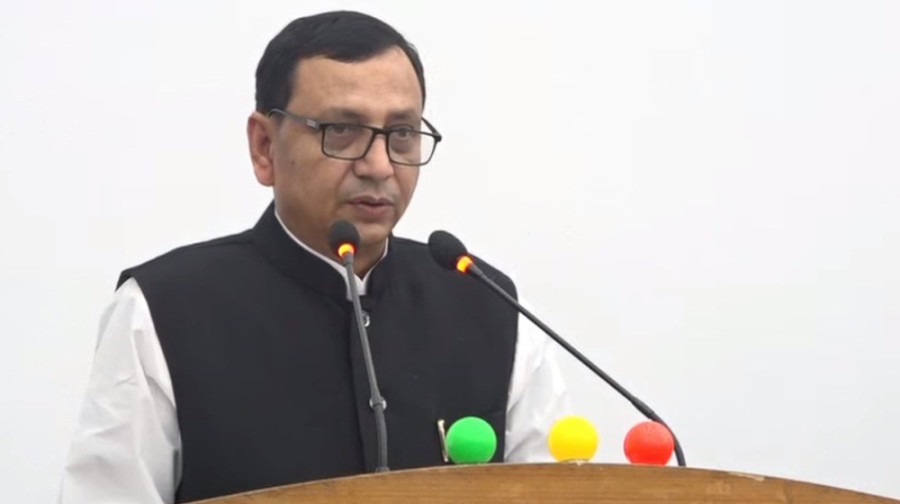
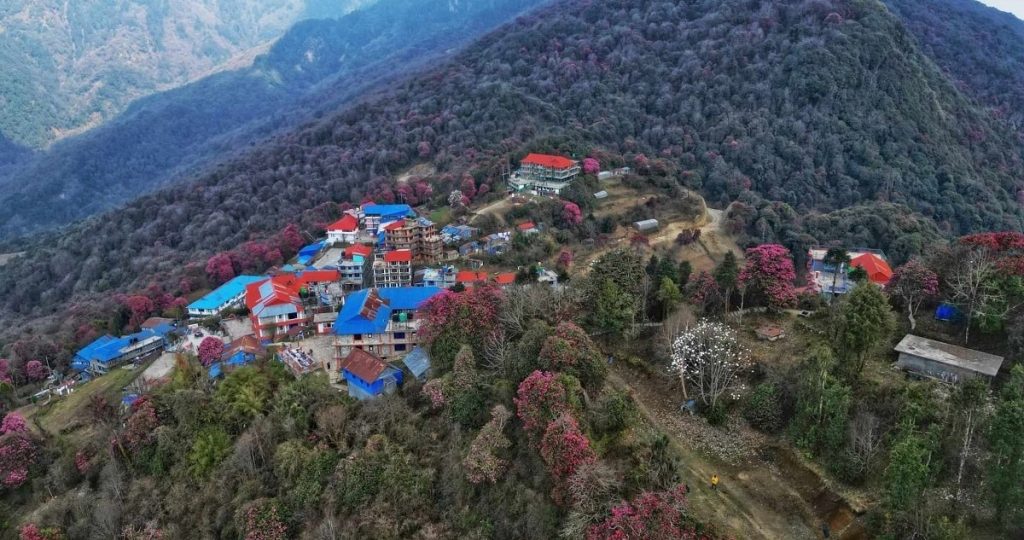
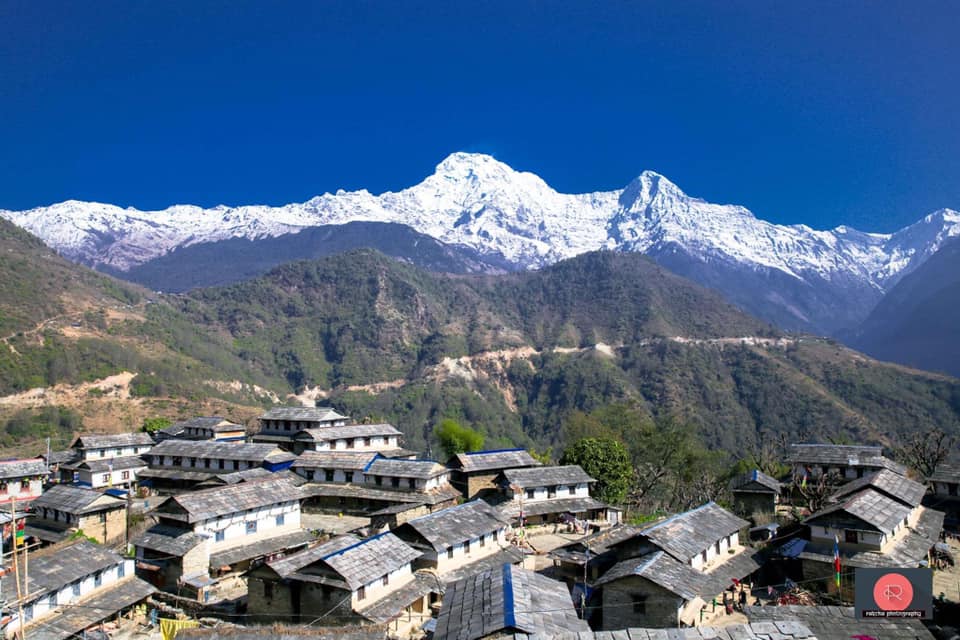

Feedback